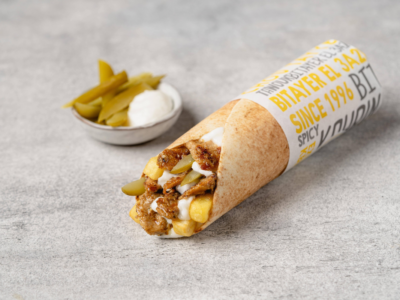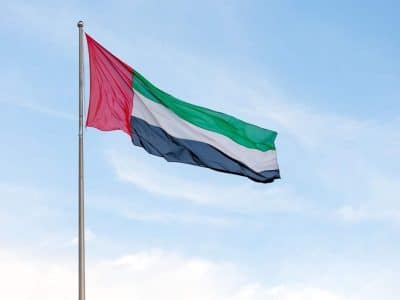From snail mucus to salmon sperm and jelly masks – Korean skincare has been taking the internet by storm as beauty enthusiasts flock to purchase products fuelled by influencer hype and trending content online.
Often referred to as K-beauty, these products are known to contain uncommon ingredients and meticulous routines aimed at achieving clear and smooth skin – commonly termed as “glass skin.”
The quest for ‘glass skin’
“Glass skin” is a term that has become synonymous with flawless, dewy and intensely hydrated skin. According to trending skincare routines, achieving this look involves a comprehensive skincare regimen with a focus on hydration, exfoliation and the use of products containing active ingredients.
The goal is to create a complexion that reflects light, free from visible pores or imperfections.
According to a recent report, The K-beauty products market size is expected to grow at a compound annual growth rate (CAGR) of 9.3 per cent till 2030.
The growth of the industry has been witnessed in several key markets across the world. In Japan, Korean beauty imports in 2024 increased by 120.8 per cent. Dubai is home to several online and physical stores, specifically targeted at selling K-beauty products.
One of the most popularised ingredients in K-beauty products in recent times is snail mucin, also known as snail secretion filtrate. Historically, the use of snail mucin in skincare can be traced back to ancient Greece, where it was used to treat skin inflammation.
However, in modern times, the resurgence began when Chilean snail farmers noticed the softness in their hands and the rapid healing of cuts, eventually leading to the incorporation of snail mucin into cosmetic products.
The Korean brand CosRX has recently created a buzz on social media for its snail mucin-containing products. The brand’s product range includes snail mucin cleanser, creams, toner and more. The full set currently sells for around AED600.
“The hype surrounding K-beauty products is often driven by their unique ingredients and formulations. I have come across products containing, for instance, snail-derived components. Typically, these products gain viral attention when they feature ingredients that are unexpected or unfamiliar in the beauty industry. Additionally, the incorporation of advanced technology in skincare formulations also contributes to their widespread appeal,” said Andre Axl Menezes, co-founder and social media specialist at No Requests Media in an exclusive interview with Arabian Business.

The increased popularity of K-beauty is primarily attributed to the growing influence of social media platforms.
“When famous beauty influencers promote these products online, more eyes get drawn to it. Korean brands also provide a wide range of products at reasonable price ranges with easy accessibility,” Menezes said.
While snail mucin has become relatively mainstream, the beauty industry is continually popularising the next product. Enter salmon sperm, a component that has recently garnered attention, particularly in Hollywood circles. Celebrities like Jennifer Aniston and Kim Kardashian have reportedly undergone treatments involving salmon sperm, propelling this unusual ingredient into the spotlight.
The science behind this trend centers on an ingredient called polydeoxyribonucleotide (PDRN), derived from salmon DNA. PDRN is believed to offer several skin benefits:
- Enhanced skin regeneration: Promotes tissue repair and accelerates wound healing.
- Improved hydration: Increases moisture retention, leading to a plumper appearance.
- Collagen stimulation: Encourages collagen production, which can reduce signs of ageing.
In practice, treatments often involve microneedling combined with the topical application of PDRN-rich serums. Microneedling creates micro-injuries in the skin, facilitating deeper penetration of the serum.
“Salmon testicle DNA has been praised in research for its capacity to repair moisture barriers, boost collagen synthesis, reduce inflammation, restore skin suppleness, and stimulate cell regeneration. As such, it is a promising treatment for skin damage and a key component in anti-ageing,” said Chane Ann Marshall, Beauty Therapist, Aesthetics by King’s College Hospital London Dubai.
Beyond these exotic ingredients, the methodology of Korean skincare also plays a pivotal role in its global appeal. Double cleansing is a fundamental step in the K-beauty regimen, ensuring that the skin is impeccably clean before the application of other products. This process involves two distinct steps:
- Oil-based cleanser: Removes oil-based impurities such as makeup, sunscreen, and sebum.
- Water-based cleanser: Eliminates water-based debris like sweat and environmental pollutants.
Advocates of double cleansing assert that this method prevents clogged pores, reduces breakouts, and enhances the absorption of subsequent skincare products.
The allure of K-beauty
The K-beauty meticulous routines and emphasis on gentle, effective ingredients resonate with consumers seeking both effectiveness and indulgence in their skincare rituals.
However, the rapid growth of trends and products also invites skepticism. Some dermatologists caution that while ingredients like snail mucin and PDRN show promise, more extensive research is needed to fully substantiate their long-term benefits and potential side effects.
Additionally, the commercialisation of these trends can lead to exaggerated claims, making it crucial for consumers to approach new products cautiously.
“Especially with something that you’re going to be applying to your skin, there’s a big risk not knowing how it may affect you. Sometimes it may be hard to understand what a product contains and how it may or may not affect you, as long as the company can present it in a way that is understandable, this can build trust between the brands and customers,” Menezes explained.
The influence of social media on skincare trends has raised growing concerns regarding younger children adopting complex skincare routines. In many cases, these routines involve products containing anti-ageing ingredients that are not appropriate for pediatric skin.
According to a recent post by the Connecticut Children’s Medical Center, the use of adult skincare products is a critical health issue affecting children.
“No. It’s not safe for kids to use adult skincare products. But thanks to TikTok “skinfluencer” trends everywhere (#schoolgrwm, for one), kids are getting the wrong messages about what it means to keep skin healthy. Many preteens and children as young as 6 years old (!) have been using skincare products with strong, active ingredients,” a recent post said.
“Products with retinol, high-strength AHAs, other acids and ‘active ingredients’ are not meant for young, developing skin,” said Juan C. Salazar, Physician-in-Chief, Connecticut Children’s Medical Center.
Fuelled by the increased adoption and popularity of K-beauty, brands are now seeking to capitalise on the trend. Companies around the world are incorporating Korean beauty ingredients and branding into its products.
Korean brands such as Laniege and Glow Recipe have gained global momentum and are now popular around the world. Laniege, although launched in the 90s, gained immense popularity on social media after signing with Sephora, particularly with its launch of the Lip Sleeping Mask.
According to the Business Research Company, the world’s largest market for K-beauty products in 2024 was North America. However, in the Middle East and Africa (MEA) skincare spending is expected to double as K-beauty continues to expand its product lines.
In Saudi Arabia, Innisfree, CosRX and Laniege emerged as the most popular K-beauty brands.
While the meticulous routines and unconventional ingredients continue to captivate beauty enthusiasts around the world, the industry also faces concerns over the scientific validity of its claims and the potential risks of younger consumers using potent skincare formulations.
As brands race to capitalise on the trend, the challenge lies in balancing innovation with responsible marketing and education, its long-term impact will depend on continued research, transparency, and an informed consumer base.








